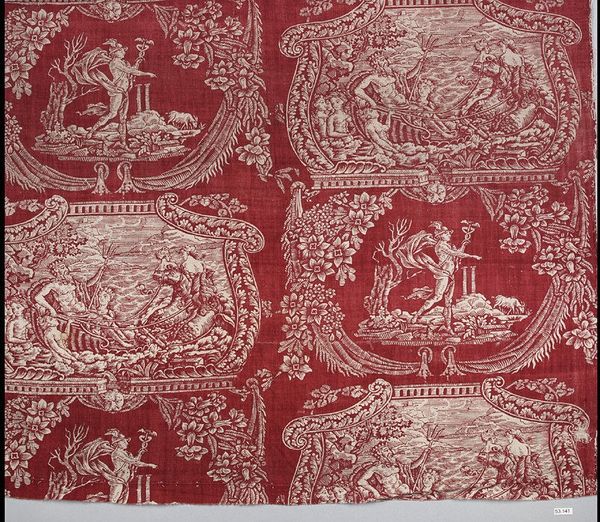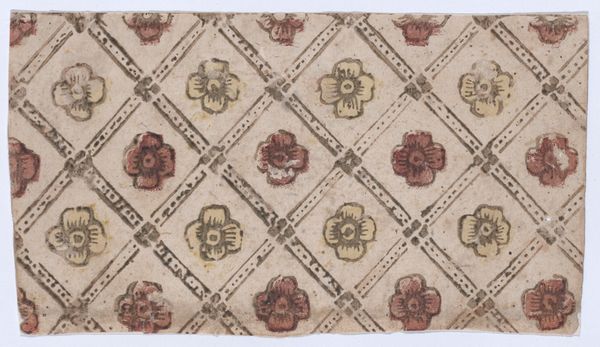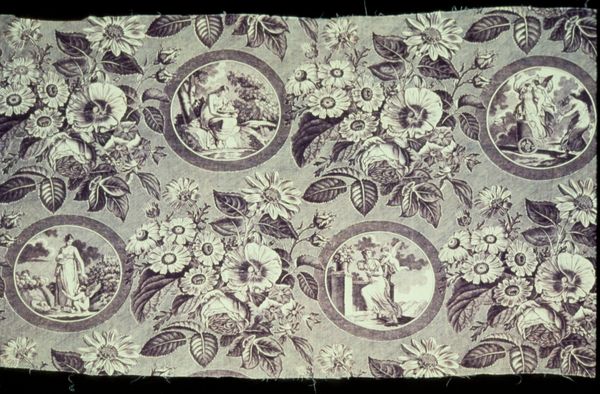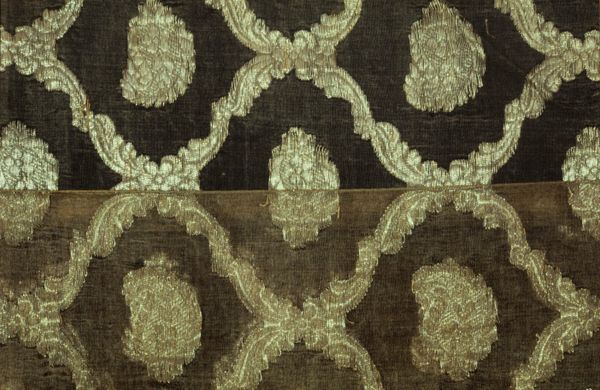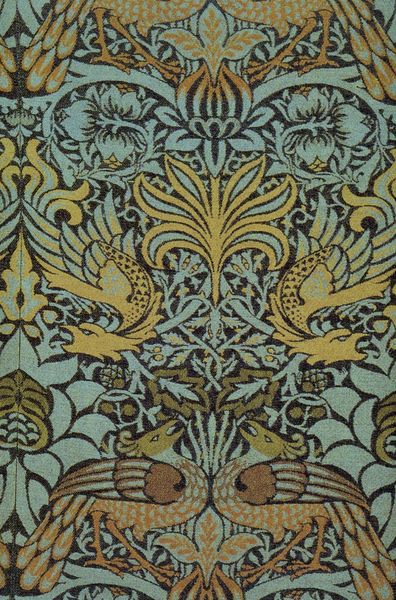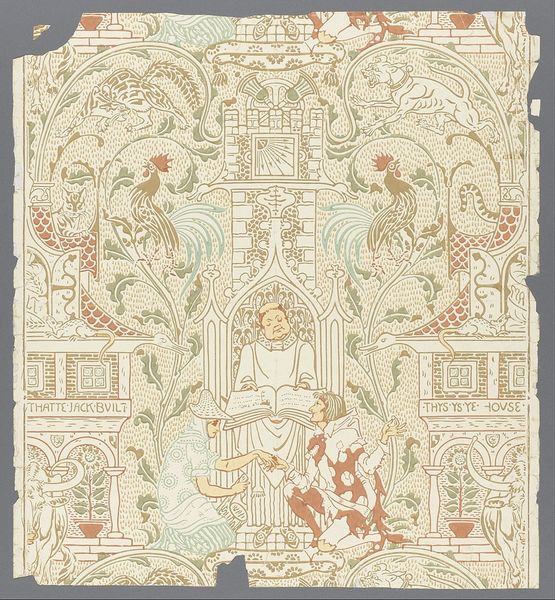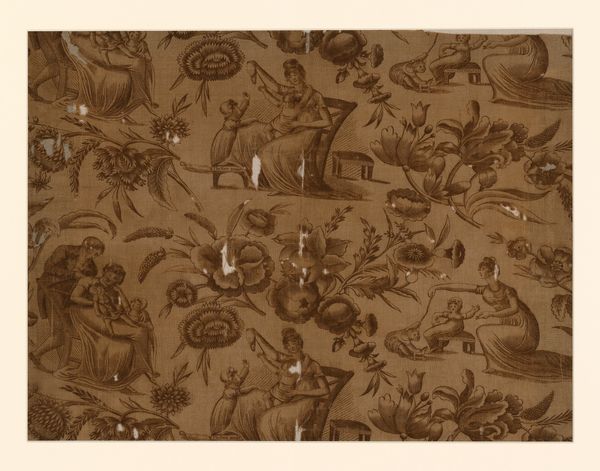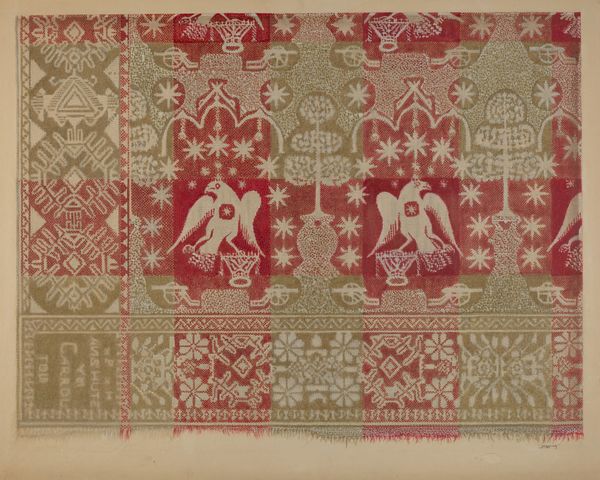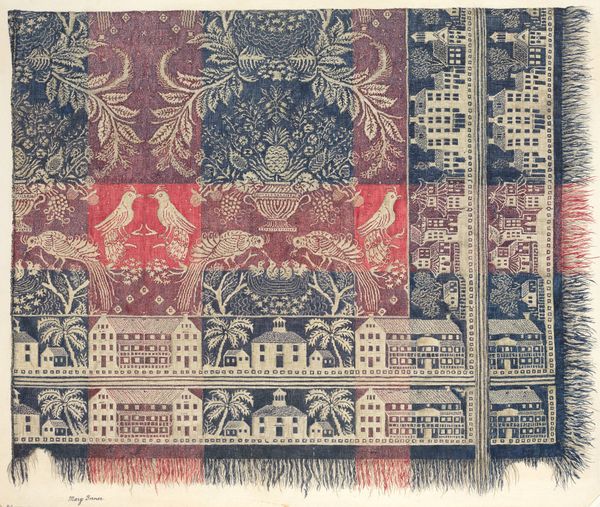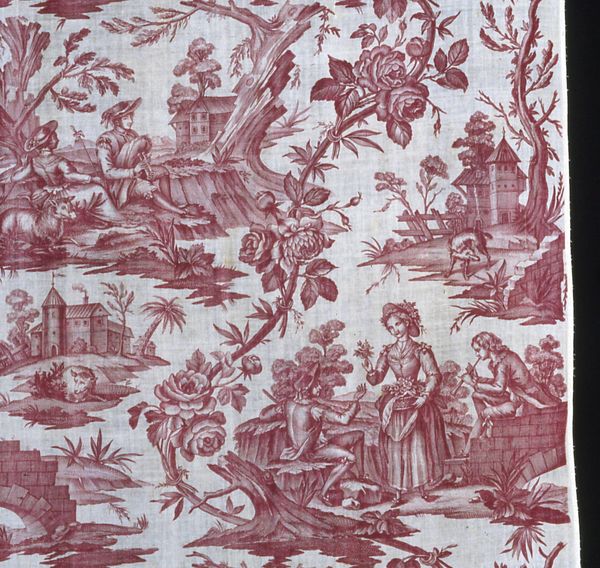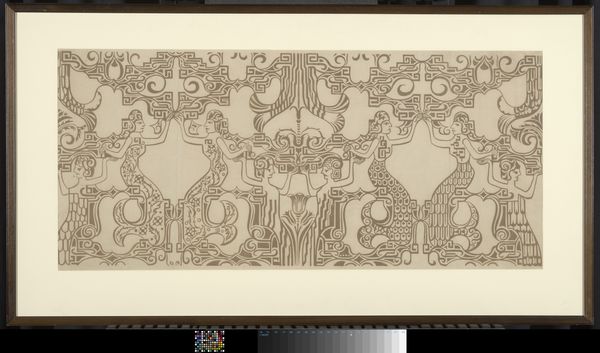
print, textile, sculpture
#
neoclacissism
#
allegory
# print
#
landscape
#
textile
#
sculpture
#
history-painting
#
decorative-art
Dimensions: L. 52 x W. 67 inches 132.1 x 170.2 cm
Copyright: Public Domain
Editor: Here we have "The Wolf and the Lamb (La Fontaine fable)" created in 1804 by Jean-Baptiste Huet I. It seems to be some kind of printed textile. I'm initially struck by how decorative it is, and all of the figures within. What stories do you think this piece is trying to tell? Art Historian: Indeed, it's a fascinating piece! Notice how Huet uses the textile medium itself. These aren't simply surface decorations; they actively engage with classical motifs. Observe the repeating allegorical scene featuring the wolf and lamb—it serves as a powerful symbol, drawing upon cultural memory and morality. How do you feel this image contrasts with, say, the idealized figures from Greco-Roman sculpture represented? Editor: I see what you mean! The classical figures project an idea of order and perfection, while the wolf and lamb story represents conflict, even injustice. So, is it the contrast between the ideal and reality that gives the image weight? Art Historian: Precisely! The contrast isn’t accidental. It speaks to the human condition itself. Look at how the Neoclassical style frames the more barbaric tale. Does it remind you of other historical or social narratives of that period? Editor: Now that you mention it, the French Revolution was only a few years prior! Perhaps this seemingly decorative textile hints at the social tensions still present. Thanks so much for pointing that out! I learned so much by just slowing down to explore the symbols. Art Historian: And I have had the chance to re-examine some important cultural touchstones, thank you for that! Now let’s delve deeper into the narratives other pieces are telling nearby.
Comments
No comments
Be the first to comment and join the conversation on the ultimate creative platform.
